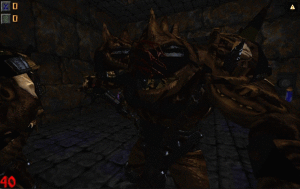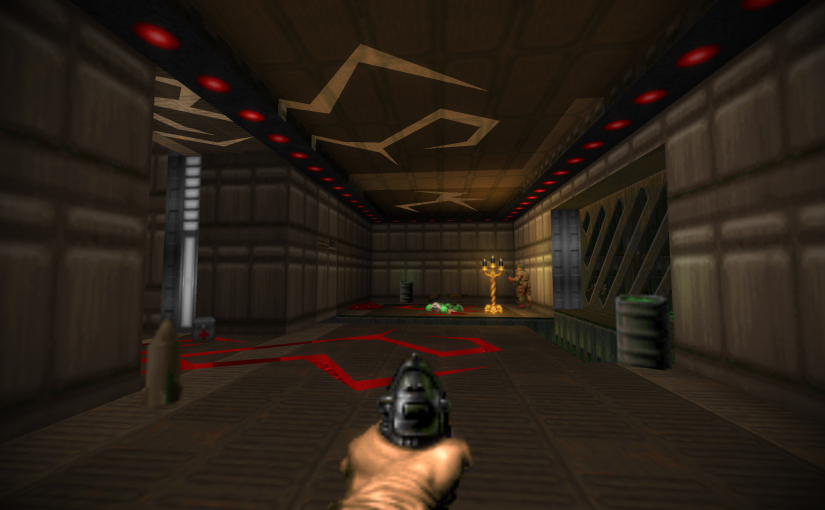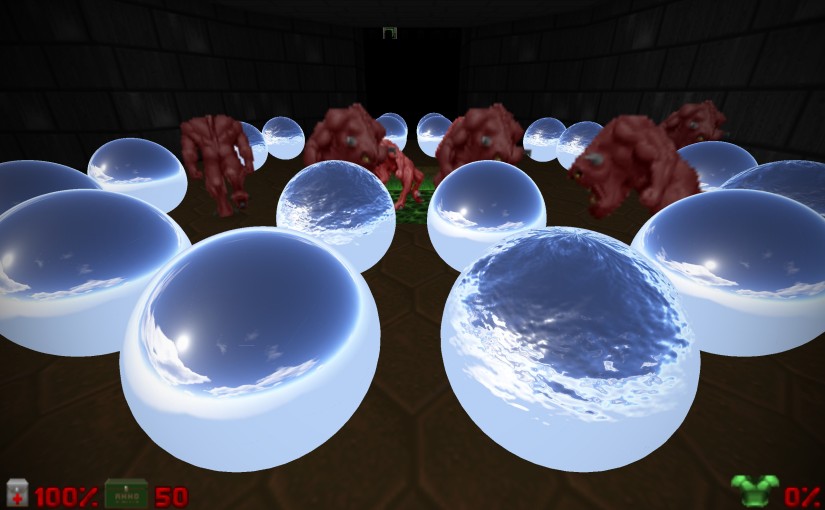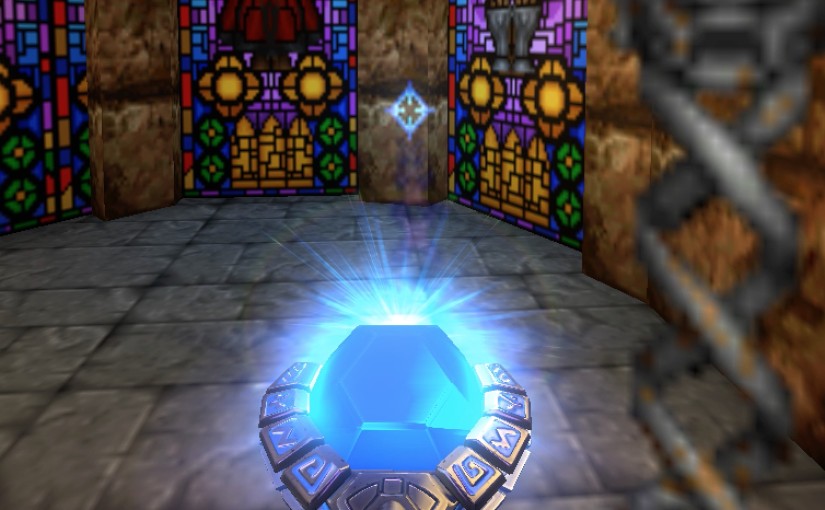This week’s screenshot shows a work-in-progress version of veirdo’s beautiful new Sapphire Wand model for Hexen. It takes advantage of the new model rendering features such as random alternative animation sequences, animated shader variables, and custom GL parameters for drawing layered effects.
On the topic of weapon models, the new renderer still lacks the vanilla-style walk bobbing. That shouldn’t be a lot of work to implement, though. After some additional weapon position fine-tuning this should be ready for prime time, and we can start preparing some models for distribution and use with the 2.0 builds.
As planned, last week I was working on a better way to load shaders from packages. I managed to complete the improved functionality as planned: when any package is loaded, it is checked for shader definitions; if found, the shaders are added to the runtime shader bank. Similarly when a package is unloaded, its shaders are removed from the the shader bank. Now there is no longer any special case logic needed for the net.dengine.client packages, as their shaders are loaded the same way as shaders from any other package.
I then proceeded to add a way to customize shaders using macros. Like C, GLSL allows defining macros for the preprocessor. This enables injecting custom code at compile time. For example, let’s say a model wants to continuously scroll its texture. This could be done using Doomsday Script, however one would need to keep restarting the script at regular intervals to keep the animation going — not the most efficient way to do things if you have a lot of objects using the model. However, if the model injects a line of code into the model shader for modifying its UV coordinates on every frame, all the work is done cheaply by the GPU. And even better, if the shader is later updated (for example when the user installs a new version of the engine), the model has a much better chance of continuing to work correctly.
Click the screenshot below for a short animation:

Naturally model packages can also provide their completely custom shaders that do not depend on the net.dengine.client shaders in any way.
I was also briefly obsessed with improving the formatting of log entries. There is something about formatting text that manages to hook me every time. The most visible changes are that the so-called “log sections” that contain contextual information about where a log entry was created are now placed within square brackets. This should improve readability. In the doomsday.out/runtime debug output, the content now uses better alignment to visually indicate which entries belong together.
#1815 200.594 I (v) [BindContext] 'global' cleared
#1815 200.594 I (v) 'deui' cleared
#1815 200.594 I (v) 'console' cleared
#1815 200.594 I (v) 'message' cleared
#1815 200.594 I (v) 'chat' cleared





